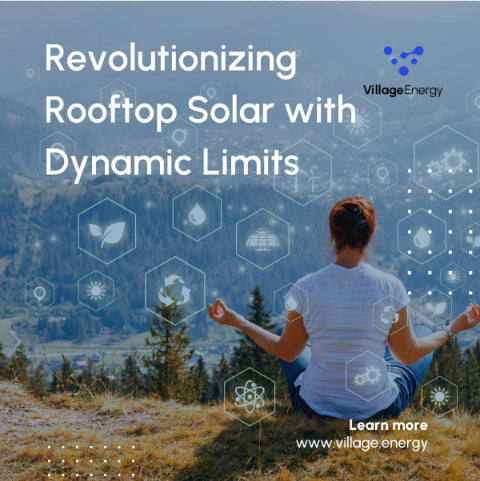Rooftop solar is booming. The global energy landscape is shifting, and it's estimated that rooftop solar systems' capability to feed energy back to the grid will rise from 30% to 50% between 2030 and 2050. But with this growth comes challenges to the network. Traditionally, utilities have relied on static operating limits for Distributed Energy Resources (DER) on their power systems, limits that are fixed and unable to adapt to real-time conditions.
That's where Dynamic Operating Envelopes (DOE) come in.
What Are Dynamic Operating Envelopes?
DOEs is a relatively new mechanism increasingly discussed in the energy sector over the past few years. It represents a significant step forward in how we manage our growing renewable energy resources. DOEs define the upper and lower boundaries within which resources, like rooftop solar, can import or export energy safely and reliably within any given time interval. These boundaries are not fixed; they change dynamically based on the current conditions of the network.
This flexibility is essential in the face of growing intermittent distributed energy resources. Establishing DOEs enables utilities to improve how they monitor and manage these resources within dynamic operating parameters, rather than static ones that might become outdated or irrelevant as conditions change. DOEs also mean that more intermittent renewables can connect to the network.
Village Energy's Collaboration with Australian Network Operator
Village Energy is partnering with an Australian Network Operator that recognizes the need for innovation in this space. Village Energy is proud to be undertaking a Proof of Concept (POC) to de-risk and expedite DOE capabilities with this Network Operator. Our team will demonstrate the capability to manage behind-the-meter rooftop solar inverter compliance with DOE's using our advanced hardware and software solution.
This is not just about compliance. It's about showing how DOE can be applied in real-time, adapting to the ever-changing energy landscape, and unlocking a new level of efficiency and sustainability.
Why Is This POC Significant?
Demonstrating this capability is the first step towards an opportunity to deploy this capability to the Australia-wide market for DOEs. This means that what starts as a collaboration could eventually revolutionise how rooftop solar is managed across the energy market.
This supports the broader vision for network operation of making energy management more flexible, responsive, and aligned with the needs of both consumers and the grid. By successfully implementing this POC, we can show that DOEs are not a theoretical concept but a practical tool that can be utilised today.
Conclusion
The collaboration is a glimpse into the future of energy management, a future where static limits are replaced by dynamic boundaries. This is an exciting project and a pathway towards a more sustainable and efficient energy landscape.
Stay tuned as we embark on this exciting journey, demonstrating how technology and vision can transform the way we think about and manage energy.
